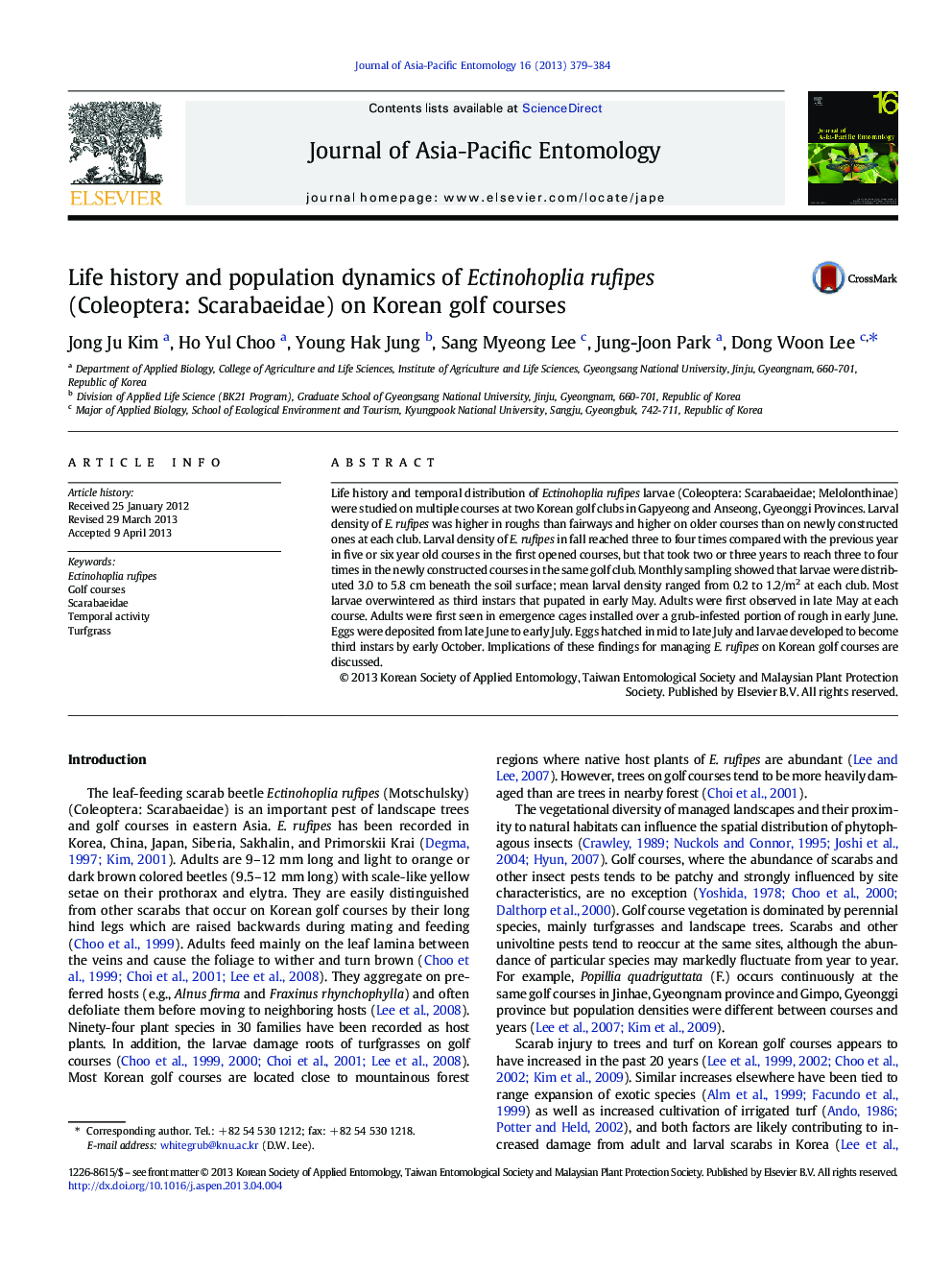| Article ID | Journal | Published Year | Pages | File Type |
|---|---|---|---|---|
| 4524489 | Journal of Asia-Pacific Entomology | 2013 | 6 Pages |
•We firstly revealed life cycle of Ectinohoplia rufipes.•Larval density of Ectinohoplia rufipes was higher in roughs than in fairways.•Adults were observed in emergence cages during the first week of June, with oviposition from late June to early July.•Eggs hatched in mid to late July and larvae had developed to be 3rd instars by early October.
Life history and temporal distribution of Ectinohoplia rufipes larvae (Coleoptera: Scarabaeidae; Melolonthinae) were studied on multiple courses at two Korean golf clubs in Gapyeong and Anseong, Gyeonggi Provinces. Larval density of E. rufipes was higher in roughs than fairways and higher on older courses than on newly constructed ones at each club. Larval density of E. rufipes in fall reached three to four times compared with the previous year in five or six year old courses in the first opened courses, but that took two or three years to reach three to four times in the newly constructed courses in the same golf club. Monthly sampling showed that larvae were distributed 3.0 to 5.8 cm beneath the soil surface; mean larval density ranged from 0.2 to 1.2/m2 at each club. Most larvae overwintered as third instars that pupated in early May. Adults were first observed in late May at each course. Adults were first seen in emergence cages installed over a grub-infested portion of rough in early June. Eggs were deposited from late June to early July. Eggs hatched in mid to late July and larvae developed to become third instars by early October. Implications of these findings for managing E. rufipes on Korean golf courses are discussed.
Graphical abstractFigure optionsDownload full-size imageDownload as PowerPoint slide
